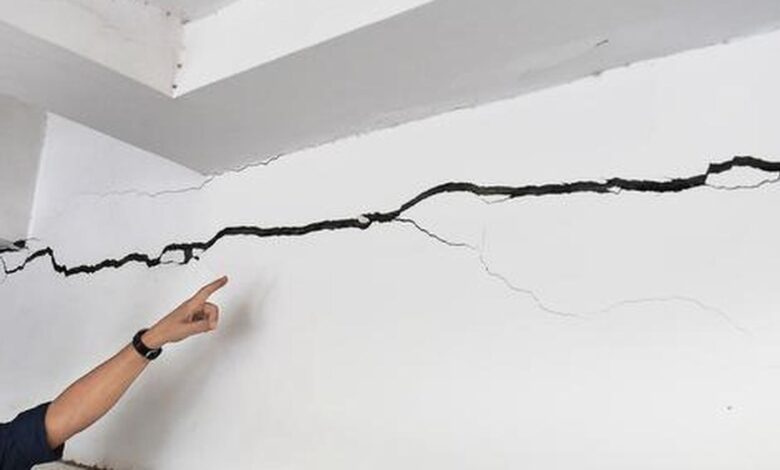Homes develop cracks in Srinagar’s Rainawari due to land subsidence


Representational image only.
| Photo Credit: The Hindu
“At least six residential buildings in Srinagar’s Rainawari locality have developed cracks and suffered damage due to suspected land subsidence, prompting the administration to vacate the homes and form an expert committee to ascertain the details and suggest remedial measures,” officials said on June 26.
“Some homes in the Khwajapora Surteng area of Rainawari started to develop cracks on June 17, that became wider over the next few days,” the officials said. The locals believe the homes began to develop cracks after some portions of the land began to sink.
“The cracks widened with each passing day. We approached the administration, which asked us to vacate the houses,” local resident Manzoor Ahmed said. The situation has sparked panic among the locals.
“Deputy Commissioner (Srinagar) Bilal Mohi-Ud-Din Bhat, who is also chairman of the District Disaster Management Authority, has formed an expert committee to ascertain the details and suggest remedial measures,” the officials said.
“The nine-member committee is headed by Additional Deputy Commissioner (Srinagar) Syed Ahmad Kataria and includes Ghulam Jeelani, a professor of Earth Sciences at the University of Kashmir,” they said.
“The committee has been asked to submit its findings within a week and suggest measures for preventing environmental damage, covering other allied and incidental issues of land subsidence in the area,” they added.
The area was hit by land subsidence in 1999-2000, after which a case study was done by a team of experts led by Bikram Singh Bali from the Department of Earth Sciences at the University of Kashmir.
The study used ground penetrating radar and found that the surface change phenomena was due to extensive underground mining related to the pottery industry, which had a hundred-year history in the area at that time.
It said the area witnessed land subsidence for the past several decades and, in the process, most structures suffered extensive damage.
“Major sub-surface observations made were underground cavities, room and pillar mining structures and voids. In addition to the sub-surface structures caused by the mining in the historical past, the surface deformations were observed in the form of cracks developed in the construction,” the study had said.
Jammu and Kashmir has witnessed land subsidence incidents in the recent past as well. In April, 74 families were forced to leave their homes in Pernote village of Ramban district due to land sinking.
Two months before that, more than a dozen residential buildings and a mosque in the Garsu village of Doda district developed cracks. In July 2023, cracks were seen on the riverside road in Batengo of Anantnag district.
In April of that year, cracks were observed on the Tingshore hill in the Halmatpora area of Kupwara. The cracks, which damaged several tin sheds, were followed by land subsidence, raising fears of a hill collapse.
“The cause of the land subsidence could be natural factors such as groundwater dissolution and earthquakes, as well as human activities such as groundwater extraction, mining and urban development, which lead to compaction and subsidence of the ground,” experts say.






